Hello! Click on one of our members below to chat on Whatsapp
Noteably, the most talked about trek in the world, is the epic Inca Trail to Machu Picchu in Peru. Being able to hike the Classic Inca Trail through the Andes is an attainable adventure for most. The trail does not require intense training and contains many variations to suit all budgets, time constraints
and fitness levels. Its jam packed with history, culture & adventure. Dont be fooled, the trek is challenging but the rewards are many. The crown jewel of the majestic Machu Picchu awaits you at end, in its full glory. This is the hike to end all hikes, with challenge and reward dished out in equal measure. Take in hidden Andean valleys, high mountain passes, tropical jungles, and mysterious ruins as you travel the famous Inca Trail.
Witness a unique vintage point of the Machu Picchu Citadel from the world famous Sun Gate (2 720m/ 8 924ft). After hiking through the Trail, feet aching and a bit of a foggy brain, that first exhausted step onto the Sun Gate eliminates all negative thoughts or feelings instantly. Here will be your first view of the panoramic views of Machu Picchu including its surrounding mountain peaks of Huayna Picchu and Machu Picchu.
The sheer size of the citadel and the stunning lush mountainous landscape will take your breath away. The challenges you faced and conquered while hiking this trek makes this momentous sighting even more magical. Peru certainly knows how to put you through your paces but always remembers to compensate you handsomely for your efforts!
Whether you experience Machu Picchu at sunrise or sunset, the surreal way nature unveils the ingenuity behind the construction of this site is mesmerizing. How the sun shines over the citadel, spilling over like a pot of gold puts everything in perspective. It makes complete sense why the Incas chose this particular location to honor Inti the Sun God, the most sacred and revered God of the Inca Empire.
Conquering the Inca Trail trek is high on the agenda for many visitors to the country, but it’s not something you can just turn up and do. In this comprehensive post, we’ll give you the low-down on all those burning questions, including the hike difficulty, what to pack, when to buy a permit, and what part altitude will play in your adventure.
Taking on the Inca Trail to Machu Picchu is the most iconic experience in Peru, and we salute you for considering including it in your itinerary. This is one of the best hikes in Peru, taking you on adventures beyond your wildest dreams.
We are often asked, “where is the Inca Trail?”, and we always reply with a cheeky grin, “which one?”. The truth is, there are thousands of kilometers of Inca trail snaking out across the continent like an ancient spider casting its gossamer web over the realm. For first-time visitors and hiking enthusiasts, there is, of course, only one Inca Trail: the route that travels through the Sacred Valley and culminates magnificently at Machu Picchu!
With such an epic name, you might expect the classic Inca Trail length to be out of your grasp, especially if you’re not an avid hiker. Yet don’t worry, it’s only 43 km (27 mi) long, which is doable for most people on a four-day tour.
If you think that sounds tiring, how about following the trail of the Incas in its entirety, which was around 40,233 km (25,000 mi) long? Now that would be an epic walk! The empire once stretched into Ecuador, Chile, Bolivia, Argentina, and Colombia as well as Peru, with roads connecting settlements and trading centers across South America.
The famous Inca trail to Machu Picchu is an original path that was constructed to absolute perfection. They built thousands of stairs, supported by retaining walls in some sections to avoid landslides during rainy season. The majority of the trails maintains the original stone and architecture from the Incas. There are other sections that had to be restored, but the esthetic of the architecture has kept its integrity. Priests and high-ranking officials were the only people who had the pleasure of embarking on this divine journey to the holiest site of them all. Inca engineering was the most advanced form of engineering of its time and it still remains a mystery as to how they succeeding in constructing the most structurally sound temples and homes in very unforgiving terrain.
Machu Picchu citadel was built in the 15th century as a royal Incan enclave but was abandoned less than 100 years later.. The settlement went unoccupied for many years and was eventually covered by the encroaching Amazon Jungle. It was later rediscovered in 1911 when American archaeologist and explorer Hiram Bingham came searching for the illusive Vilcabamba.
Completing the classic Machu Picchu hike has become one of the most sought after adventures in the world, and many travelers have it at the top of their bucket list. Why do Inca Trail hiking tours trump other fabulous treks? The rich history, the challenge that’s not off reach and the many ruins you get to explore along the way. You can´t forget you are trekking through the longest mountain range n the world, the picturesque Andes Mountains. The Inca Trail is that once in a lifetime experience, that is on many people´s bucket lists.
You can get stamps in your passport for each completed day of your Inca Trail hike.
Some people believe that explorer Hiram Bingham, who ventured along the Inca Trails to Machu Picchu all those years ago, inspired the character Indiana Jones.
The classic Inca Trail hike length is four days, but you can opt for shorter or longer versions if you prefer.
If you’re into running and feel invincible you can take part in the Inca Trail marathon which is one of the toughest in the world.
At 4,215m (13,828 ft) the ominously named Dead Woman’s Pass is the Inca Trail highest point, which is almost 1,800m (5,905 ft) taller than Machu Picchu!
The first thing trekkers want to know about the Inca Trail is how long the route takes. Four days is the norm for classic Inca Trail tours, but other options are available. Those who like a real challenge can attempt the 3-day Inca Trail hike, but we highly recommend adding on the additional day so you can properly enjoy the experience along the way!
Have a look at the Inca Trail map further down the page for a visual overview of the route.
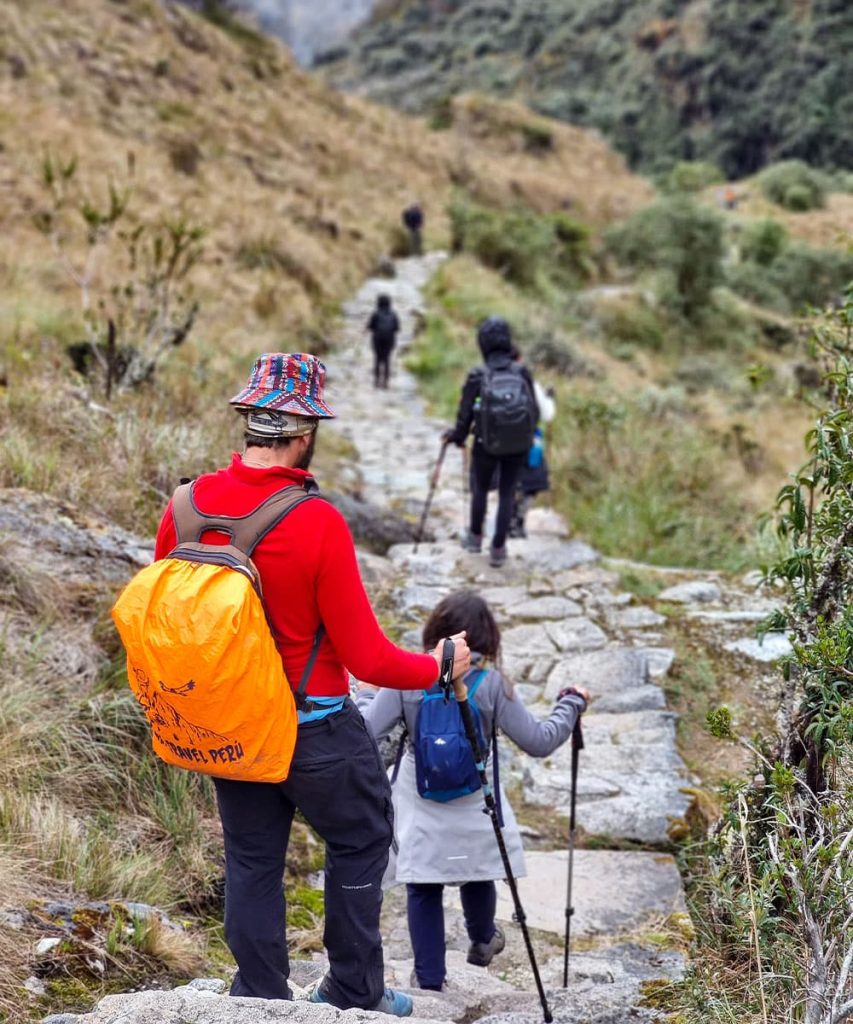
Most people who trek the Inca Trail opt for the original four-day trip. This gives you enough time to take in your surroundings without feeling like you’re constantly racing against the clock.
If you’re unsure how long to spend on the Inca Trail – 4 days is what we’d recommend. Here’s what to expect in a nutshell:
For walkers who want more time to hike the Inca Trail, the 5-day trek is a great option. Explore off the beaten tourist track and avoid the crowds, plus have longer to visit the archaeological sites along the way. This is a more relaxed Inca Trail route, giving you lots of opportunities for breaks and photos.
If you’re looking for Inca Trail hike tours that allow you to trek at a slower pace, discover remote ruins, and even spend your last night in a hotel, then this is the trip for you!
Get more details on our 5-day Inca Trail trek including the full itinerary.
Don’t have time for the full adventure? Then a 2-day Inca Trail hike is just the ticket. This is a rewarding yet undaunting way to hike to Machu Picchu in just a day. You’ll get a taste of the classic Inca Trail and visit ancient archaeological sites as well as pass through the famous Sun Gate. On this itinerary, one day will be spent trekking, while the other will be enjoyed at the citadel. Hike Huayna Picchu, the iconic peak looming over the ruins, is often a great way to end your trip.
If you fancy doing a short Inca Trail to Machu Picchu, we have you covered!
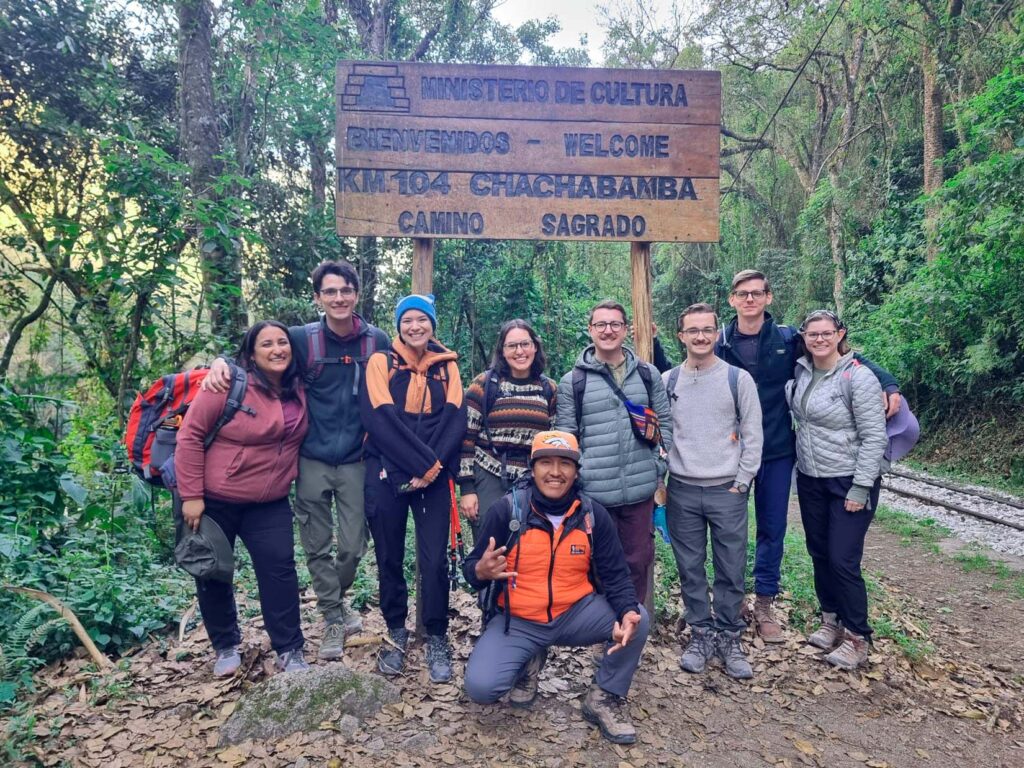
There are two main seasons in Peru – wet and dry. One has clear benefits when it comes to trekking the Inca Trail routes, but the other shouldn’t be dismissed as there are positives to visiting at all times of the year.
The Dry Season: May-August
There’s no question that these are the best months to hike the Inca Trail to Machu Picchu. Although nights are cold, the days tend to be mild, there’s little rain, and the skies are sunny. On the flip side, this is high season, meaning busy trails, crowded campsites, and hordes of tourists swanning around Machu Picchu at the end of your trek, especially during July and August. Permits need to be booked well in advance for hiking in this period.
The Rainy Season: December-March
Many people think that the wet season is not the best time to hike the Inca Trail, and some feel it’s dangerous for a Machu Picchu trek. It’s true, trekking and camping in the rain isn’t much fun, and the paths can become slippery after a downpour, especially in December and January. Yet if you go fully prepared for whatever the weather the Gods throw at you (sometimes sun instead of rain!), then you could find a lot of value in travelling at this time of year.
Permits are easier to get hold of at short notice, and tours tend to be cheaper too. Nights are warmer, the paths are quieter, and Machu Picchu is almost deserted – you’d never get the citadel to yourself during the dry season!
The Shoulder Seasons: April, October, and November
Savvy travelers prefer to enjoy the best of both worlds with an Inca Trail hike during the shoulder seasons. The weather can be unsettled (on Saturday you could be basking in the sunshine while on Monday there could be heavy showers), but there are usually lots of great walking days to be had. The trails are relatively quiet, yet you won’t have the deluges of the wet season to contend with. Come after the rains in April and enjoy lush green landscapes for enviable photos!
Note that the Inca Trail is closed for maintenance in February, but Machu Picchu remains open throughout, which makes this a great time to visit the citadel on a day trip without the crowds!
While it’s possible to make last-minute bookings for many Peru tours, Inca Trail treks are the exception. Reservations need to be finalized months in advance, particularly during the high season. The key is planning ahead. It is recommended to book 4 to 6 months in advance to hike during the dry season and booking 2-3 months in advance do hike during the rainy season.
Inca Trail Permits
You need a permit to hike the Inca Trail. These are issued in your name and linked to your passport number and specific travel dates, which means they’re non-transferable once purchased. If you need to renew your passport before your trip, make sure you do this before booking your permit! If you change your passport, keep the old one and bring it with you to Peru. You can also do the change with your tour operator, you will need to send them a copy of both old and new passports and the change is done at a fee.
Permits for 2024 are mostly sold out.
In short, no. The route is strictly controlled so you need to travel with an authorized tour company. Do check operator credentials carefully before booking, as not all are permitted to take hikers on the Inca Trail! Book with a reputable local travel agency to ensure your holiday goes smoothly. Orange Nation is fully licensed and has extensive experience hiking the Inca Trail and providing tours to Machu Picchu.
The iconic Machu Picchu hike cost varies greatly between operators, but it’s important to realize that in this arena, you get what you pay for. Always be wary of cheap tours and ask what the fee includes to ensure the field team are being fairly treated.
Prices typically include things like the Inca Trail permits, camping gear, meals while trekking, entrance tickets into Machu Picchu, bus tickets, train tickets and private to and from Cusco. All staff at Orange Nation get a competitive salary and are treated fairly. Orange Nation includes tents, foam mattresses, meals, round-trip transport from Cusco, trekking staff, and entry into Machu Picchu. Our team is the secret to the many treks we have completed successfully.
Hiking the Inca Trail to Machu Picchu is a serious undertaking, while everything is put in place to ensure a safe and enjoyable experience, things can go wrong in the wilderness. This is why you must have adequate insurance for your Inca Trail bookings. Check with your provider to ensure that high altitude trekking is covered, as this may be an optional extra on some policies.
The Inca Trail hike is a moderate hike, with a few steep inclines along the way. It’s easier than you might expect, but you do need to be reasonably fit. There are few factors to consider. Firstly, the hike is 42 Km long, which means you will be hiking everyday for a considerable amount of time. Also, for the majority of the hike there will be undulating terrain, which can be hard on the knees. You should also expect to come across steep inclines and high altitudes. The trail is made of over 70 000 steps and walking up steps is far more challenging than taking on a gradual climb on flat ground.
We feel the most important challenge to be aware of is the altitude. Not everyone will get altitude sickness and there is no concrete science to figure out how this affects each individual. Some individuals suffer the most extreme symptoms of altitude sickness, whereas other can feel virtually nothing. Some symptoms can include difficulty breathing, nausea, headaches and loss of appetite.
Something else that can have an impact on the experience is the group dynamic, and the different ages and abilities of trekking individuals. So, its important to trek at your own speed and remember trekking is a personal journey and not a race or competition.
You know that saying, that it’s about the journey as much as the destination? Well, in this case, it’s true, even though exploring Machu Picchu is a pretty awesome prize at the end. The journey, however, is magical. There is so much too see, soo much to explore and the mountainous landscape is absolutely breathtaking. The comradeship you feel with fellow hikers and the self accomplishment and the feeling of achievement is like nothing on earth.
The Inca Trail trek takes you on a journey through several different landscapes, some of which you perhaps weren’t expecting in Peru. Begin in the fertile Sacred Valley and end in lush cloud forests.
Underfoot, much of the path is paved, with stone steps to negotiate along the way, some of which appear to have been built by giants! The steep sections can be punishing on the knees, but the views make it all worthwhile, especially when you get to the top of the high passes.
As you’re trekking the Inca Trail, come across a wide variety of flora and fauna, including birds, vizcachas (a chinchilla-like rodent), lots of cacti like the prickly pear, and carpets of orchids in season.
One of the highlights of hiking the Inca Trail to Machu Picchu is that you’ll get to see lots of archaeological sites that are only accessible on foot. Many of these ancient Incan ruins are well off the beaten tourist trail, so chances are you’ll have them all to yourself.
Llactapata is the star of the show on the first day, while the beautiful Inca house at Runkurakay features on day three. Meanwhile, the noble Inca town of Sayakmarka is one of the most stunning stops on the entire trail.
Finally, the steeply terraced site at Wiñay Wayna is one for the photographers and is the most preserved site of them all. It’s conveniently located right below your night 3 campsite.
Machu Picchu lies at the very end of the Inca Trail. Peru always saves the best for last! Anticipation builds on day four of your trek as you wake you wake up early and walk the last few miles to Inti Punku, the Sun Gate. After posing for photos, you can finally tour Machu Picchu with your guide.
If you’re also sneaking in a jaunt up Machu Picchu Mountain (good on you!), this needs to be done before you explore the citadel. However, those who want to hike Huayna Picchu must visit the ruins first as you can’t re-enter the site afterwards.
There are three different walking circuits at Machu Picchu, each taking in selected landmarks around the complex. Some sights – like the Intihuatana and Temple of the Condor – can only be accessed on certain routes. Therefore, if you want to do the place justice, we recommend adding an extra day for a second visit to Machu Picchu so you can see the parts you missed the first time. If you choose to come back for an extra day, double check that you purchase a circuit that is different from your Classic Inca Trail circuit.
When you hike the Inca Trail to Machu Picchu, sleep in tents at designated campsites. Going back to basics is part of the adventure after all! Our tents are four-season and comfortably sleep two people, with lots of room to spread out. Have a complimentary foam mattress and camping pillow. If you wish to upgrade, rent yourself the even more comfortable Therma rest mattress for insulation off the ground. Also included is a cozy sleeping bag to keep you warm during the cold nights.
There are toilet facilities at each camp, but they’re not always the cleanest. This is why we take our own toilet tent so you can sit on your throne in relative comfort! Some camps have cold showers too if you’re feeling brave! Otherwise, we will provide a small basin with a cloth along with your morning cup of tea. Its a good idea though to bring a pack of baby wipes.
It probably won’t be the best sleep you’ve ever had, but it’ll be one of the most memorable!
You need to keep your energy levels topped up when hiking the Inca Trail to Machu Picchu, which is why getting the food right is so very important. Have your very own chef and team in tow, who will rustle up some surprisingly tasty meals considering the remote location. There’s nothing better than tucking into a delicious hot dish after a long day on the trail!
To get the most out of walking the Inca Trail, the key is in the preparation. Research the topography and culture of the region to enhance your experience. Do plenty of physical exercise and get into shape for all those high passes and thousands of steps.
While this isn’t the toughest trek in Peru, it’s not a walk in the park either. There are lots of steep ascents and downward stone steps that will put those boots, and those thighs, to the test. This is why it’s important to have a decent level of fitness before attempting the epic Inca Trail walk. The fitter you are, the more enjoyable the experience will be.
In the run-up to your trip, try and do lots of aerobic exercises like running or a stair master. If time permits take some day hikes in the hills. This will help immensely.
Want to get those excitement levels soaring before your trip? Venture into the pages of a few good books to set the scene for your expedition.
Before you hike the Inca Trail to Machu Picchu it’s imperative that you properly acclimatize to avoid altitude sickness. Anyone can be affected by this debilitating illness, regardless of age or fitness level.
The Inca Trail altitude varies from day to day. But you can expect to reach maximum elevations of 4,215m (13,828 ft), which is considerably higher than Cusco! We recommend spending a few days acclimatizing in Cusco or the Sacred Valley before starting the trek.
Local remedies to combat altitude sickness include chewing coca leaves or drinking coca tea, and of course, taking on plenty of water to stay hydrated. It is a great idea also purchase preventative medicine from your doctor before your trip.
Having the right kit is crucial for anyone hiking to Machu Picchu. Tours include camping equipment and food, so it’s just your personal gear that you need to think about. Pack light, because you only have 7kg to play with, and that includes your sleeping bag!
Here are some of the essentials:
No! Everything is transported by porters on Machu Picchu hike tours. You just carry a small daypack for your essentials like sunscreen, water, and snacks. You are given a 7kg duffel bag at briefing, for everything you’ll need overnight, including a sleeping bag. This will be carried for you and won’t be available until you reach camp.
Its important to be aware of the fact that there are bag restrictions in Machu Picchu. 25 liters is the current limit.
Most trekkers tip their guide, porters and cooks on the last day of the Inca Trail. However, tipping is not obligatory and is not included in the trek pricing.
Most importantly, you should always tip with your conscious. Tip only if you feel the team have provided an excellent service and deserve a tip. Below we provide only recommendations and guidelines as to what constitutes a fair tip. It is also easier to tip with local currency in low denomination (nuevo soles).
Suggested tipping guide:
Tipping is usually done by pooling tips from all member of the group for the porters , assistant chefs, and head chef.
For larger groups, expect to pay a little more. If you’re not comfortable with the tipping experience, you can pre-pay gratuities at the time of booking instead.
Here are a few pointers to help you on your way.
The welfare of our trekking team on the Inca Trail to Machu Picchu hike is super important to us. We strive to ensure that Indigenous communities benefit from our tourism activities, which is why all of our porters are hired from local villages.
We provide all the equipment needed by the staff team, as well as their meals and permits on the trail. They receive a fair wage as well as a consistent source of employment, which is rare in the Andean highlands.
It’s a bit easier to do the Inca Trail Machu Picchu hike now than it was in Hiram Bingham’s day! Cusco is the jumping-off point, which is great news as you’ll probably want to visit the city anyway. You can easily travel from Lima to Cusco by plane or bus. If you’re a student, check for discounts to cut down your transport costs!
Most Inca Trail holidays begin in the imperial city of Cusco. After, a short drive to the Ollantaytambo region to reach the start of the hike. Afterwards, return by train from Aguas Calientes to Ollantaytambo, before enjoying a private car transfer back to Cusco.
If you decide this classic Machu Picchu trek isn’t for you, or find that permits are already sold, there are lots of alternative adventures to enjoy. There’s everything from single-day hikes to epic 15-day journeys. Other alternatives include the Salkantay trek, the mighty Ausangate circuit, and the photogenic Rainbow Mountain experience. There’s so much more to the Andes than just Machu Picchu hiking tours!
So now you’re all set to plan your Inca Trail holiday! Hopefully, this post has answered all your questions, but if we’ve left anything out, please don’t hesitate to ask! We’d love nothing more than to put together a Machu Picchu Inca Trail tour for you, it’s our favourite subject after all.
People go on an Inca Trail hike in search of something special, yet what they discover along the way is so much more than spectacular views and new friends. Undertaking this epic trek is a chance to learn more about yourself, as you achieve things you might have secretly thought you’d never be capable of! You will arrive on the Machu Picchu hiking trail for a challenge with added scenery, but you’ll leave with new-found confidence and a treasure trove of memories that will last a lifetime.

Comfortable lodging near the ruins of Ollantaytambo, in the Sacred Valley of the Incas
Learn More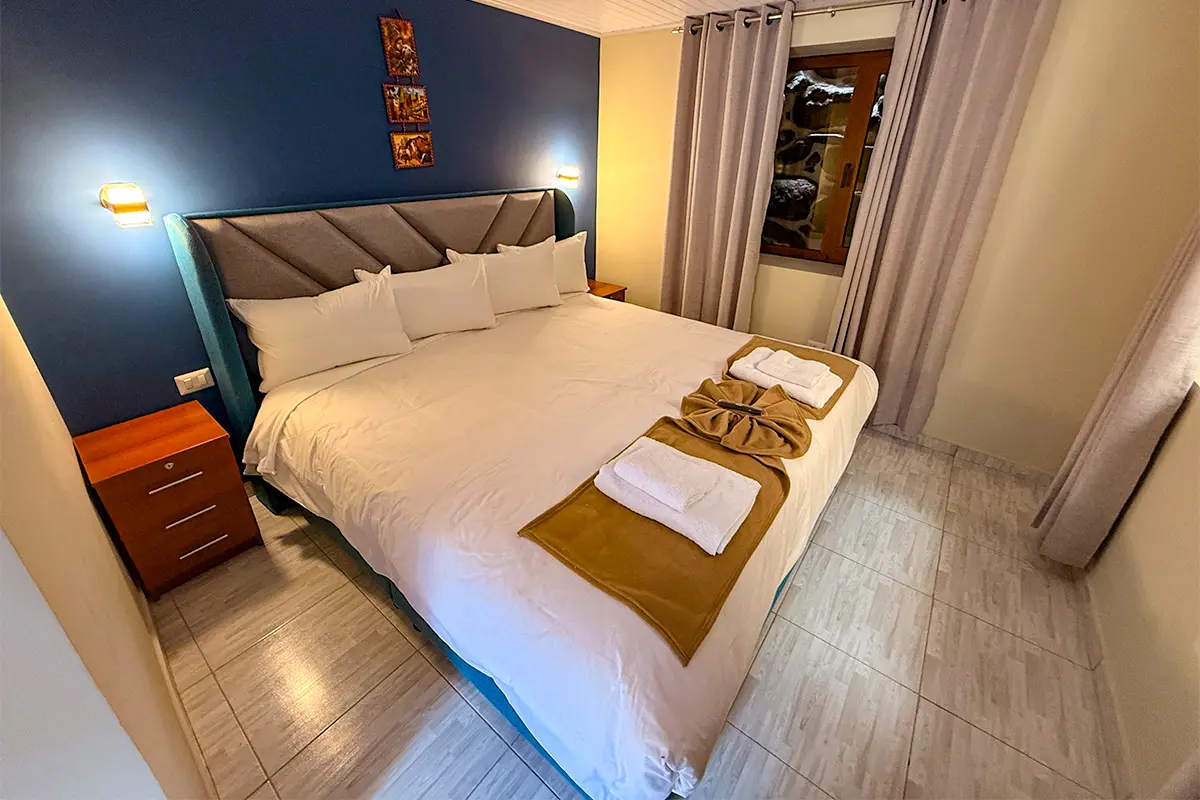
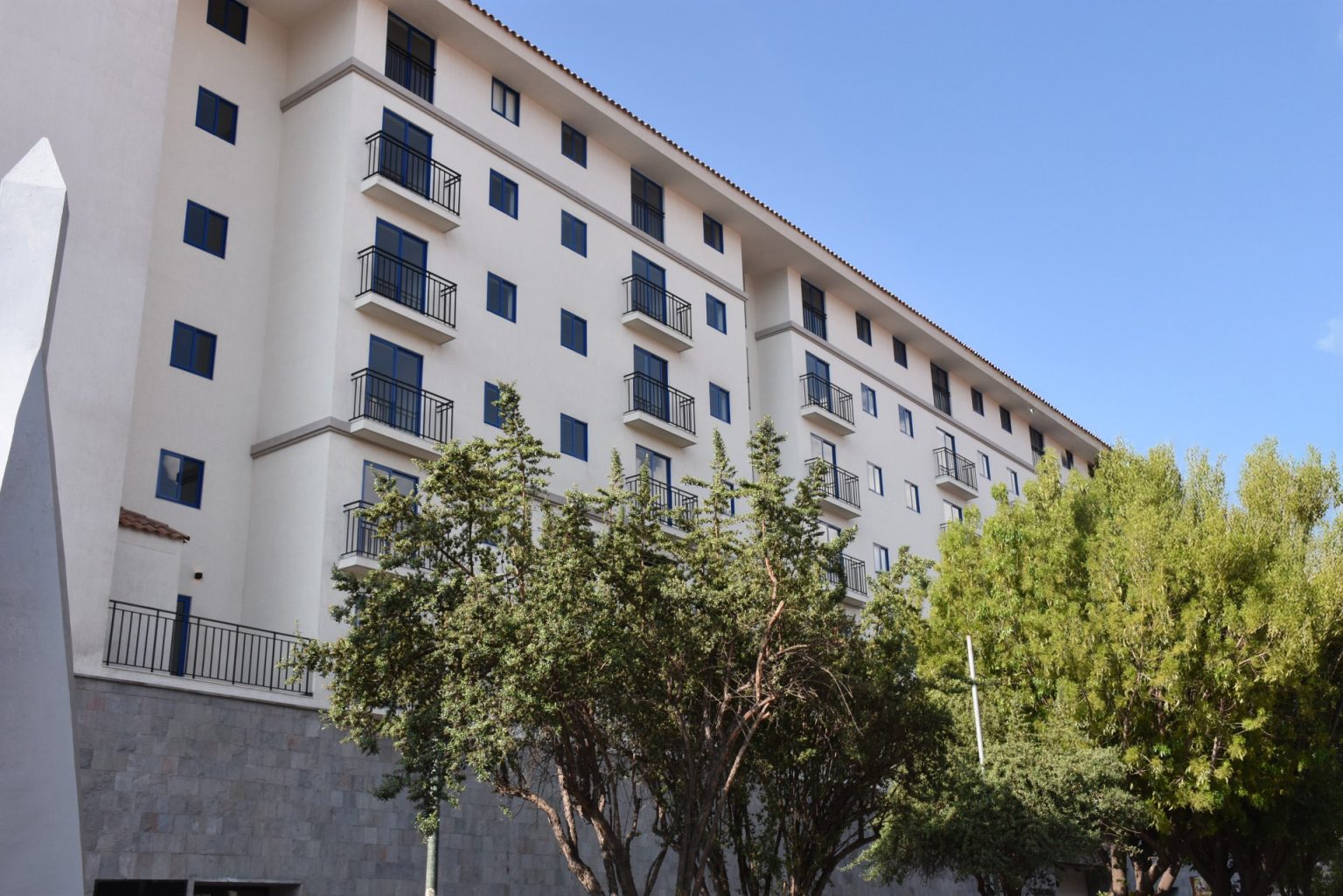
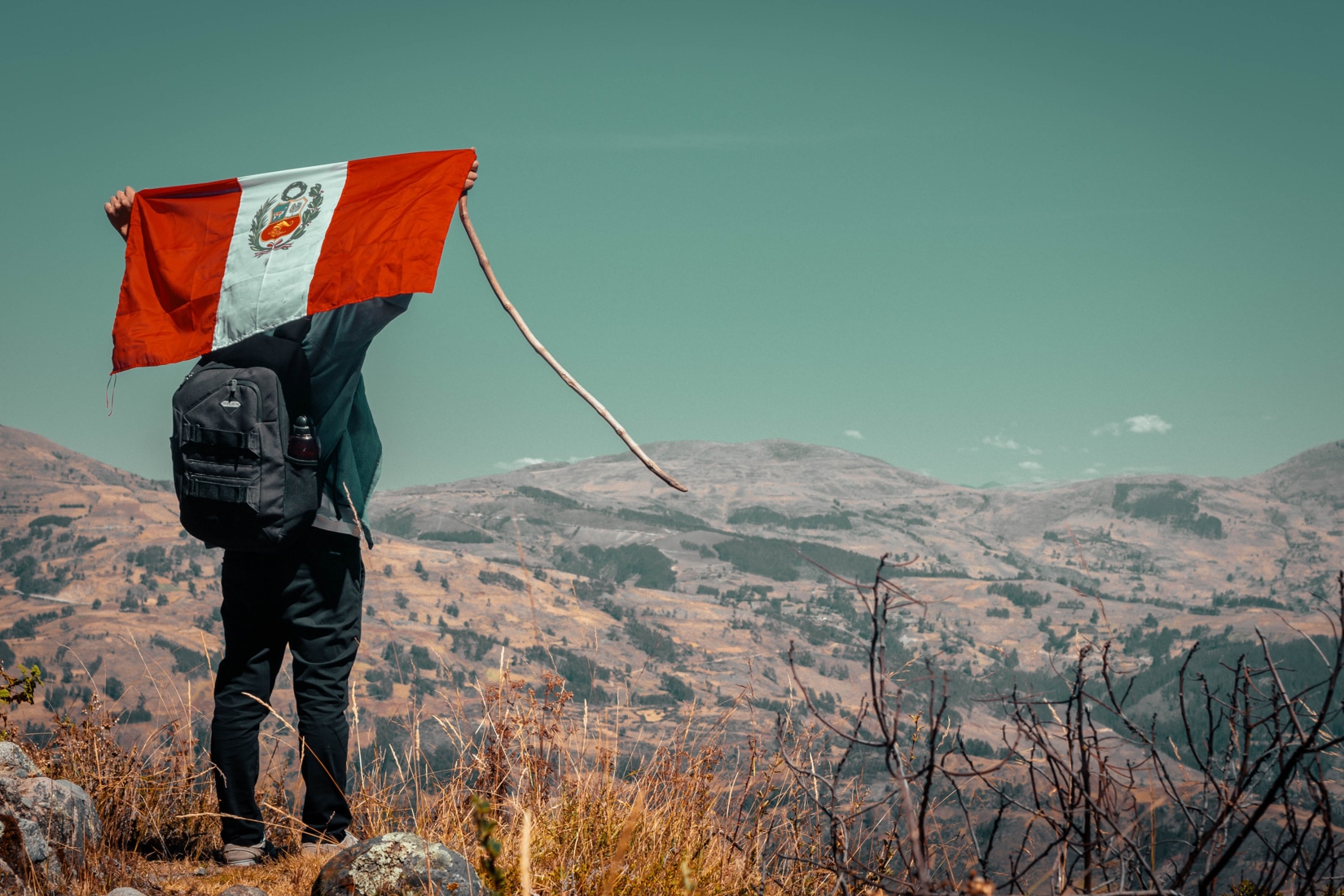
Travelling with children or teens in Peru is a different experience than travelling solo or as a couple; extra planning is required. This article will give you what you need to know to organize an unforgettable family trip to Peru. Peru is an excellent destination for children of all ages, all guaranteed to have a […]
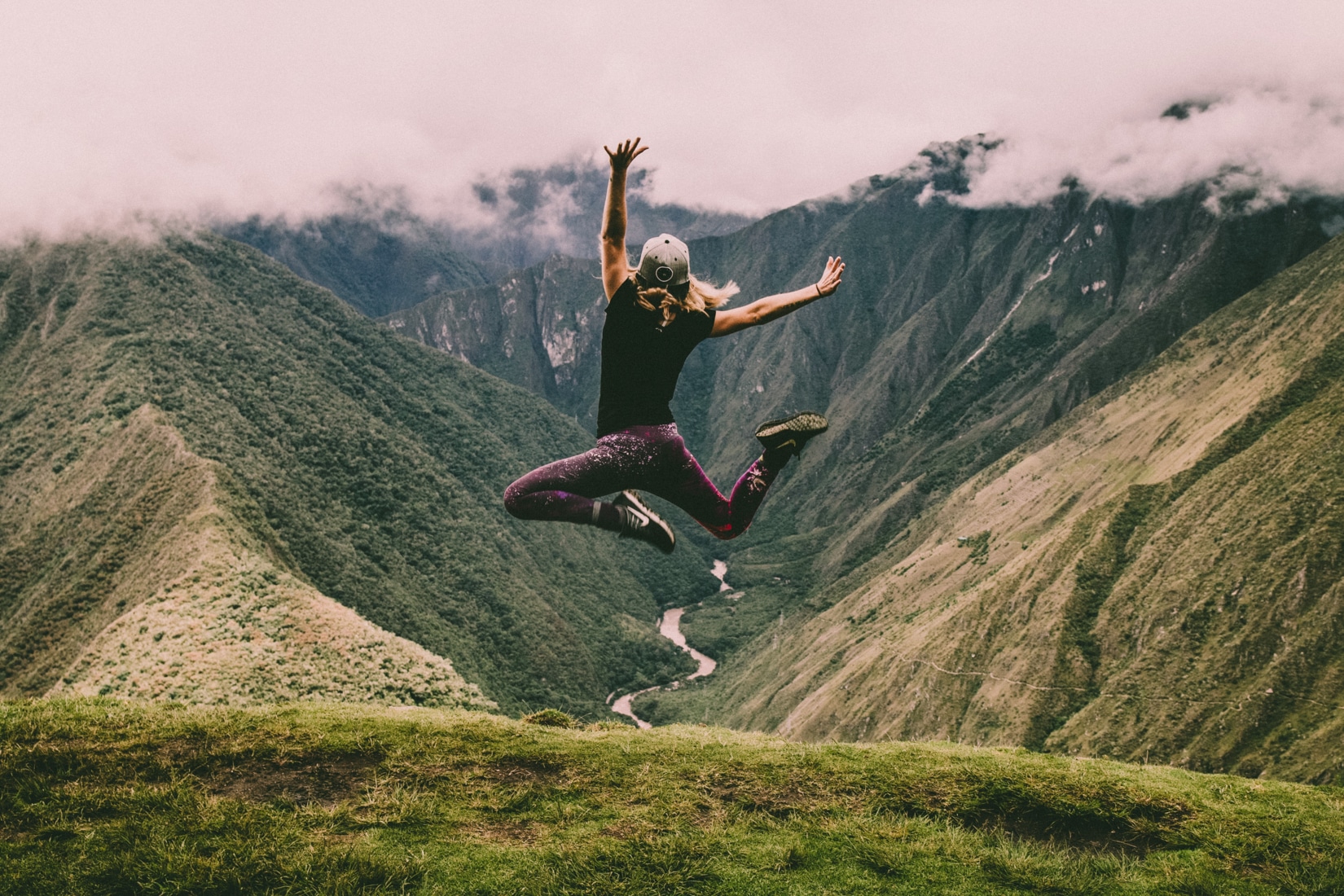
The Inca Jungle Trek to Machu Picchu is the perfect adventure trek for the thrill seekers among you. Start your adventure with downhill mountain biking, which leads to a lookout point with breath taking views of the Andean landscape. After, enjoy an exhilarating experience white water rafting down the Urubamba river. If that wasnt enough, […]
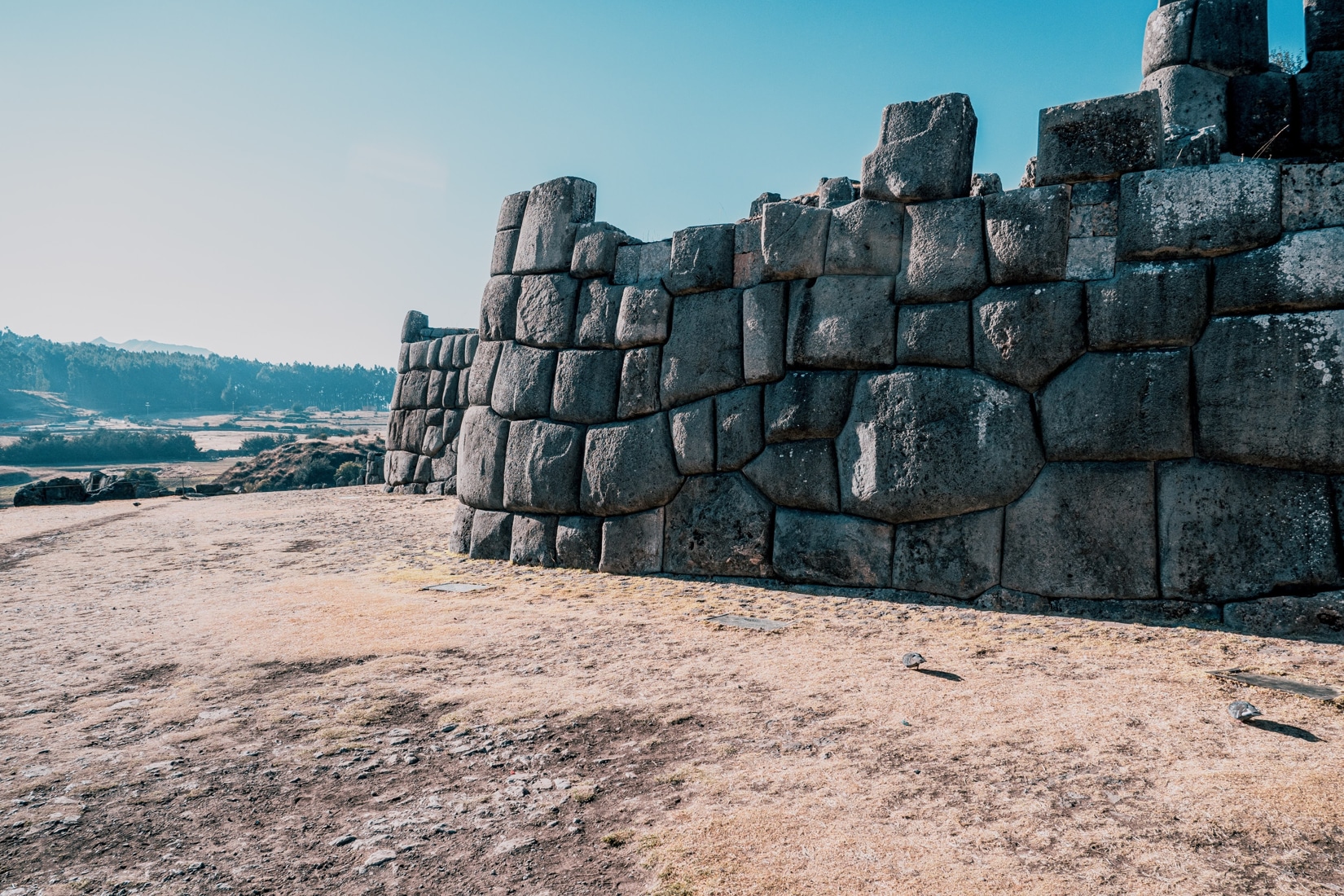
Sacsayhuamán is one of the most imposing and mysterious structures in the world. It contains 3 layers of zigzag walls made from megalithic stone. Just above Cusco you will find the enigmatic structure of Sacsayhuaman. Historians and archeologists believe that it was constructed around the 15th century during the reign of the most successful Inca […]
Trip to Rainbow mountain. First to the mountain thanks to Yair’s expert driving and special thanks to Cristian for being my guide. Highly recommend!
Our group of 8 did the 3-day Inca trail tour. From the very beginning Ray demonstrated his knowledge by answering all our questions thoroughly. Trekking the Inca trail was the hardest thing I’ve ever had to do in my life. I can say for certain that I would not have finished the trail, if not for Ray. I am not active at all, and hiking up and down a mountain, for 7 hours, seemed impossible. Within the first 10 minutes I was ready to be done. That sentiment was shared within most of my group.
Our tour guide Ray was excellent and very helpful. And we did the short inks trail to machupicchu thanks for the experience
Ray was absolutely amazing 😎 would definitely recommend him to anyone that wants to travel to Machu Picchu !!! Best experience of my life and off my bucket list🙏🏾
Vinimos desde Choquequirao para visitar Machu Picchu e incluso después de todos los momentos inolvidables del trekking con Jhony como nuestro guía Machu Picchu fue realmente memorable. Tener boletos para la entrada de las 6 a.m. fue fantástico, ya que nos permitió explorar con menos multitudes y presenciar la niebla que se elevaba sobre las ruinas.
Éramos un grupo de tres que decidimos realizar un recorrido de un día por el Valle Sagrado de Orange Nations, contemplando Ollyantaytambo y terminando en Cusco. La mejor decisión que tomamos fue que fuimos recibidos por nuestro increíble guía Miguel justo a tiempo, quien nos llevó a este increíble día lleno de diversión, risas y con un gran conocimiento sobre el área.
Gracias Jhony y Grober por sus recorridos entusiastas y conocedores. Definitivamente ambos guías turísticos del siguiente nivel con una compañía del siguiente nivel. Hicimos la caminata Laures y Machupichu con Sam Travels / Orange Nation y lo recomendamos encarecidamente :)
¡Los mejores guías turísticos del Perú para el sendero Machu Picchu! Nuestros guías turísticos Johny y David brindaron un servicio de la más alta calidad en mi experiencia viajando por Perú. Johnny enriqueció toda nuestra experiencia con humor, un conocimiento increíblemente detallado de la historia y cultura peruana, así como su entusiasmo y amabilidad. Durante los 2 días,
This was my first time in Peru and I wanted to do something bigger and better than Machu Picchu. I was searching online and came across Orange Nation's "Choquequirao Trek to Machu Picchu" , which is three times larger than Machu Picchu. Since Peru is known for a Machu Picchu
My girl and i did the Machu Pichu trek tour with Orange Nation. It was seriously the most amazing experience that we'll never forget. Gorgeous views! The long trek was worth the amazing view. The tour guide was friendly and very knowledgeable.
Wow, what a wonderful trekking experience! My trip to Peru was amazing thanks to this awesome tour that i took with Orange Nation. I did multiple tours with this company. I'm a solo traveler and everyone in my group was always still friendly and did not make me feel left out.
Excelente Anghely una nueva oportunidades de trabajo me siento feliz por estos logros